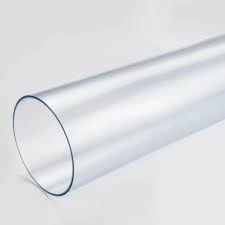नोभ . 16, 2024 09:02 Back to list
hdpe sheet for construction
HDPE Sheets for Construction A Comprehensive Overview
High-Density Polyethylene (HDPE) sheets have garnered significant attention in the construction industry due to their exceptional properties and versatile applications. As a thermoplastic polymer, HDPE is known for its high tensile strength, chemical resistance, and durability. These characteristics make HDPE sheets an ideal choice for various construction projects, offering solutions that enhance structural integrity while also catering to environmental sustainability.
Properties of HDPE Sheets
One of the key features of HDPE sheets is their high resistance to impact and stress. This makes them suitable for use in areas where heavy loads are expected, such as flooring and walls in warehouses or industrial facilities. Moreover, HDPE is resistant to many chemicals, including acids and bases, which proves beneficial in environments where spills may occur. As a non-toxic material, HDPE is also safe for applications involving food contact, making it suitable for use in the construction of storage facilities for food products.
In addition to these properties, HDPE sheets have excellent moisture resistance, which helps prevent mold and mildew growth. This characteristic is especially useful in regions with high humidity or where moisture exposure is prevalent. The smooth surface of HDPE sheets also makes them easy to clean, contributing to their popularity in hygiene-sensitive environments like hospitals and laboratories.
Applications in Construction
HDPE sheets are used in a wide range of construction applications. One of the primary uses is as a protective barrier in retaining walls and landscaping applications. Their strength and durability enable them to effectively support soil and prevent erosion, making them an excellent choice for outdoor construction projects.
In addition to landscaping, HDPE sheets are increasingly being used in the construction of drainage systems. Their resistance to chemicals and moisture makes them ideal for creating drainage pipes and liners. These applications help manage water flow and prevent contamination of surrounding soil and water bodies.
Another significant application of HDPE sheets is in the manufacturing of modular buildings. The lightweight nature of HDPE allows for easier handling and installation, which can reduce labor costs and construction time. Furthermore, the flexibility of HDPE sheets enables architects and builders to design innovative and custom structures that meet specific project requirements.
hdpe sheet for construction

Environmental Benefits
An essential aspect of using HDPE sheets in construction is their environmental impact. HDPE is made from recycled materials, contributing to waste reduction and minimizing the reliance on virgin plastics. The longevity and durability of HDPE ensure that structures built with this material require less frequent replacement, further reducing the carbon footprint associated with manufacturing and disposal.
Moreover, HDPE is fully recyclable, which means that at the end of its lifecycle, it can be reprocessed and transformed into new products. This sustainable advantage appeals to environmentally conscious builders and consumers, promoting a circular economy.
Challenges and Considerations
While HDPE sheets offer numerous benefits, there are also challenges to consider. The cost of HDPE compared to traditional materials like wood or concrete can be higher initially, which may deter some builders. However, when factoring in its durability and lower maintenance costs, HDPE can prove economically advantageous over time.
Additionally, proper installation techniques are essential to ensure the performance of HDPE sheets. Builders must be knowledgeable about compatibility with other materials and the best practices for handling and assembling HDPE components.
Conclusion
In conclusion, HDPE sheets are revolutionizing the construction industry with their remarkable properties and diverse applications. Their strength, moisture resistance, and chemical durability make them an ideal choice for numerous projects, from landscaping to drainage systems and modular construction. As the demand for sustainable building materials grows, the role of HDPE is likely to become even more prominent. By embracing HDPE sheets, builders can not only enhance the performance and safety of their projects but also promote environmentally responsible practices in the construction industry. The future of construction lies in innovative materials like HDPE, paving the way for a more sustainable and efficient building process.
-
High-Precision PVC Rigid Sheets for Vacuum Forming | AI-Optimized
NewsAug.05,2025
-
Durable PVC-M Water Supply Pipes | 60-Year Life
NewsAug.04,2025
-
Premium HDPE Water Supply Pipes: Durable & Leak-Proof
NewsAug.03,2025
-
Premium PVC-M Water Supply Pipe - Durable & Efficient
NewsAug.02,2025
-
HDPE Drainage & Irrigation Pipe - Durable, Efficient Solutions
NewsAug.01,2025
-
Premium PVC Transparent Pipe: Durable & Clear Solutions
NewsJul.31,2025

